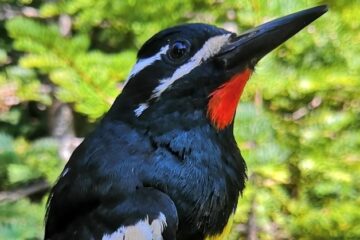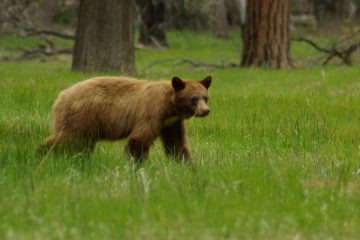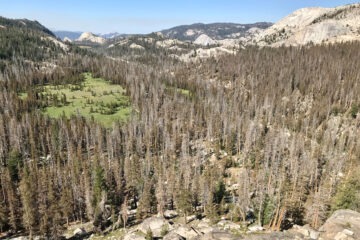Above: Yosemite’s Junior Ranger program in action (one of many donor-funded grants in 2016).
Happy New Year! Thanks for reading our recap of 2016 and helping us celebrate the difference our donors made in Yosemite last year.
We started 2016 on a festive note: On New Year’s Day, Conservancy President Frank Dean joined the National Park Service for the Rose Parade in Pasadena. After Tweeting a few behind-the-scenes photos, he hopped on the restored Wawona stage coach to ride along the route and kick off the NPS’s centennial year.
Given that milestone anniversary, 100 was a much-discussed digit for public lands in 2016 — but today, we’re focusing on other important figures from last year. Here are just some of the ways you made a difference in Yosemite, by the numbers:
▪ 2 new detections of the rare Sierra Nevada red fox, thanks to motion-activated cameras in the northern wilderness. Both images of the threatened nocturnal mammal were captured in March, at around midnight.
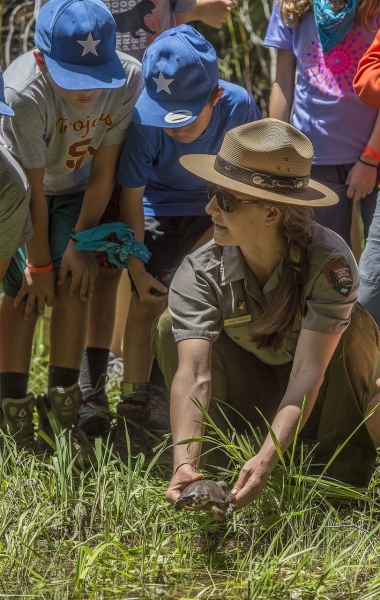
▪ 5.8 percent decline in the number of emergency response operations per 100,000 visitors, thanks in part to the volunteer Preventive Search and Rescue program, which completed a record 37,000 contacts.
▪ 10 western pond turtles and 2,000 California red-legged frog tadpoles released along the Merced River, as part of a continuing effort to restore rare reptile and amphibian species in the park.
▪ 13 student rangers at the UC Merced Wilderness Education Center led 31 Yosemite field trips; five were hired for seasonal positions in Yosemite; and one led a program for fourth graders (and took a selfie with President Obama) during the first family’s June visit to the park.
▪ 18 Sierra Nevada bighorn sheep now live in the Cathedral Range, where the addition of five rams in November brought the herd total to 16 adults (six male, 10 female) and two young ewes. The overall species population has more than quadrupled since it was listed as federally endangered, growing from about 125 individuals in 1999 to more than 600 today.
▪ 22.5 acres of high-elevation habitat treated for invasive plants, such as velvet grass and dandelion, with help from 125 volunteers. Here’s how one of those volunteers explained the importance of that effort:
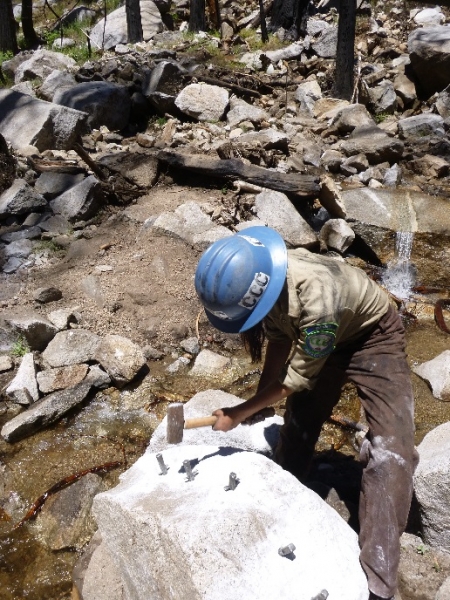 ▪ 24 California Conservation Corps members worked on nearly 90 miles of trails in Yosemite, Echo and Pate valleys; in Wawona and Hetch Hetchy; and along the Lyell Fork of the Merced. By the end of their 5-month season, the two crews had left their mark in 666 square feet of rock wall, 1,431 feet of riprap, and numerous waterbars, retainers and causeways. The experience had left a mark on them, too. See how they changed.
▪ 24 California Conservation Corps members worked on nearly 90 miles of trails in Yosemite, Echo and Pate valleys; in Wawona and Hetch Hetchy; and along the Lyell Fork of the Merced. By the end of their 5-month season, the two crews had left their mark in 666 square feet of rock wall, 1,431 feet of riprap, and numerous waterbars, retainers and causeways. The experience had left a mark on them, too. See how they changed.
▪ 97 teens explored Yosemite through 5-day WildLink expeditions, while six of that program’s alumni met with 20+ park professionals during a two-week “Career Connection” experience. Other Youth in Yosemite Programs forged new junior rangers, helped middle schoolers discover nature through photography, placed college students in summer internships, and more.
▪ 114 soil cores taken in Tuolumne Grove, where scientists were studying the conditions that help sequoia seedlings thrive. In nearby Merced Grove, volunteers naturalized “eco-graffiti” (tree carvings). To the south, crews continued restoration work in Mariposa Grove, and a dendrochronologist decoded a cross-section of an 805-year old sequoia, which will be part of new educational exhibits in the grove.
▪ 400 acres of protected habitat added to Yosemite, with the purchase and donation of Ackerson Meadow in September.
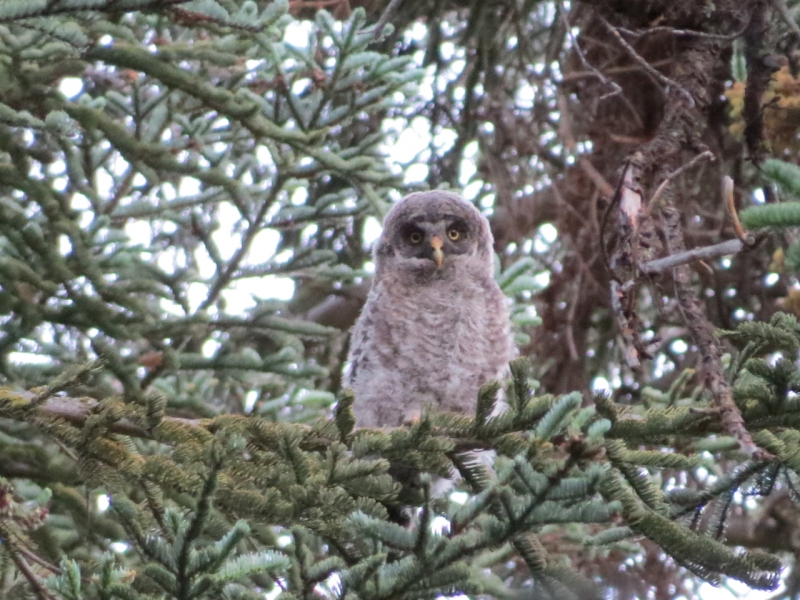 ▪ 600+ owl detections recorded by bird researchers. Most were of two special-status birds (the great gray and California spotted owls), but the crew also documented other native species, such as the northern pygmy and flammulated owls, and an invasive one (barred owl).
▪ 600+ owl detections recorded by bird researchers. Most were of two special-status birds (the great gray and California spotted owls), but the crew also documented other native species, such as the northern pygmy and flammulated owls, and an invasive one (barred owl).
▪ 2,054 songbirds recorded at Yosemite’s long-running research stations. Commonly spotted birds included orange-crowned warblers, dark-eyed juncos and song sparrows. The team also documented Pacific wrens, golden-crowned kinglets, Cassin’s vireos, and a (second) GPS-tagged black-headed grosbeak, among many others.
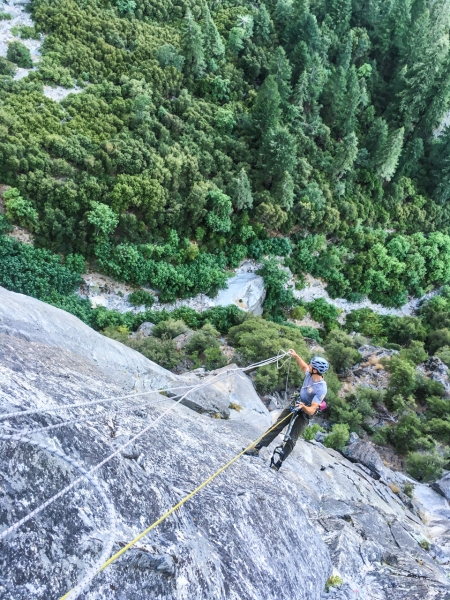
▪ 6,000+ materials added to the NPS online catalog, thanks to a project to modernize the Yosemite Research Library. Down the stairs from the library, the Yosemite Museum celebrated its 90th anniversary with a special exhibit: Why Yosemite Collects.
▪ 22,170 visitors took advantage of the Ask a Climber program near El Capitan. Rangers and volunteers answered classic climbing FAQs, but also went beyond the nuts and bolts of scaling a granite cliff, diving into the ecology of the vertical environment:
What a year — and that’s just a small piece of it! 2016 was also brimming with Outdoor Adventures, art and theater; with hard-working Conservancy volunteers; and with special events, including a BloomBlitz that documented more than 250 plant species, free nature walks on “Green Friday” for REI’s #OptOutside initiative, and, of course, the NPS Centennial, which we celebrated with partnership awards for Yosemite’s Kimball Koch and our own Olotumi Laizer, and by toasting the 100-year mark at an event organized by our friends at Anchor Brewing and Huckberry.
Thank you to all of our donors, partners, volunteers and program participants for your support in 2016. Here’s to another year of making a difference in Yosemite!

